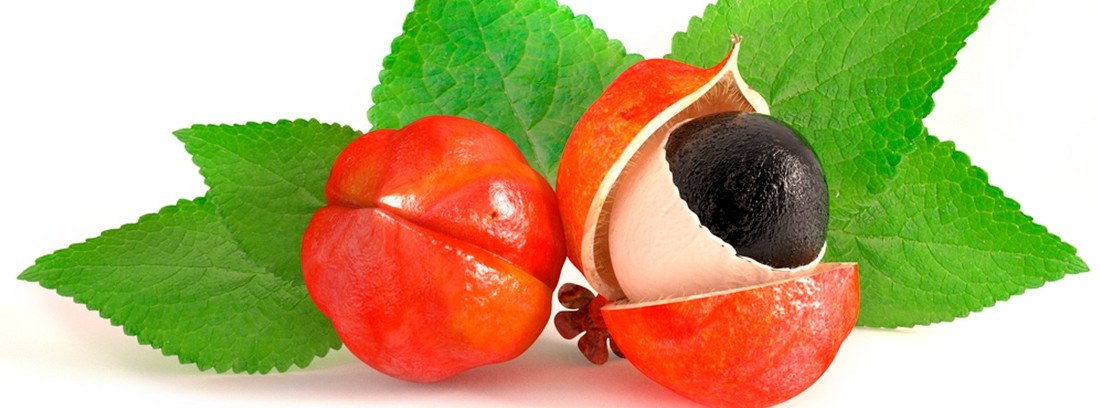Guarana

The guarana (or guaranazeiro) is a climber and woody shrub that reaches a height of 1.5 to 3 m and whose crown can occupy 9 to 12 m2.
Where does its origin come from
Its name, Latin Paullinia cupana, was given in honor of Simon Paulli, a German physician and botanist who was the first to describe it. The common name comes from an indigenous legend of the Guaraní tribe, in whose language (Tupí-Guaraní) wara'ná means “fruit like people's eyes” because when the fruits reach maturity they open and reveal their inner part white and black aril of the seed, which resembles a human eye.
According to an Amazonian legend, Guarana arose from the eyes of a goddess, which gives it secret properties and for this reason it is considered, in the Orinoco and Maues regions, as a sacred plant. The Guarani tribes believed that this fruit had magical properties and they used it to heal diseases of the intestine and regain strength. With the seeds they made a tonic and stimulating drink that they called “elixir of long life”. The leaves, roots and barks were used as fishing gear.
Uses and benefits of guarana
- Stimulating seed: Guarana has tonic and stimulating properties due to its high caffeine content, which can help reduce the feeling of physical and mental fatigue. However, due to its high tannin and fiber content, the caffeine in guarana seeds is released slowly so that it is not as exciting to the nervous system as coffee.
- Helps to better cope with stress: It can be helpful in periods of physical and mental asthenia, in seasonal asthenia (caused by changes in season) and in convalescence.
- Facilitates weight loss: Taking guarana together with a healthy lifestyle (balanced diet and exercise) helps you lose weight due to its toning properties, which relieve fatigue that usually occurs at the beginning of the diet, and due to its ability to reinforce energy expenditure thanks to to its content in caffeine and other substances such as theobromine and theophylline.
- Other uses: as an astringent in case of diarrhea, as an antioxidant and as a diuretic.
How to take it?
Official monographs recommend, for adults, a maximum dose of 3 g divided into three doses. An excess can cause insomnia, nervousness and addiction in some cases. It can be found on the market in the form of powder capsules, powder extracts or mixed with coffee. There are also products that combine it with other antiasthenic substances such as.
Commercial products usually recommend the following dosages on average:
- Powder capsules: 300 to 500 mg, once or twice a day.
- Dry extract capsules: 100 mg, one to two times a day.
- Dust: one to three teaspoons in a glass of water, milk or juice, although its taste is quite bitter. It can be flavored with cinnamon.
- Instant coffee with guarana: three tablespoons of coffee in water or milk, hot or cold.
There are soft drinks and energy drinks that contain guarana. The caffeine content they contain should always be taken into account so as not to exceed the maximum daily amount as it could cause alterations to the nervous system.
Guarana paste
With guarana you can prepare pasta. When the fruits are ripe, they open and the seeds are separated. These are washed and toasted to avoid fermentation. Then they are crushed, mixed with water and kneaded to form a thick paste, to which they add tapioca to give it more plasticity. Finally, the paste is molded and dried over a fire.
Contraindications
Guarana is not recommended for:
- People with an allergy to caffeine or other substances of the same group such as theobromine, theophylline, among others.
- Patients with serious cardiovascular disorders (heart failure, coronary insufficiency, arrhythmia ...), gastroduodenal ulcers, epilepsy, insomnia, etc.
- Children under 12 years old.
- Women in the first trimester of pregnancy as it can interact with other medications.
In this sense, if you suffer from any health problem or are taking any medication, before consuming products with guarana you should consult your doctor or pharmacist.
(Updated at Apr 13 / 2024)